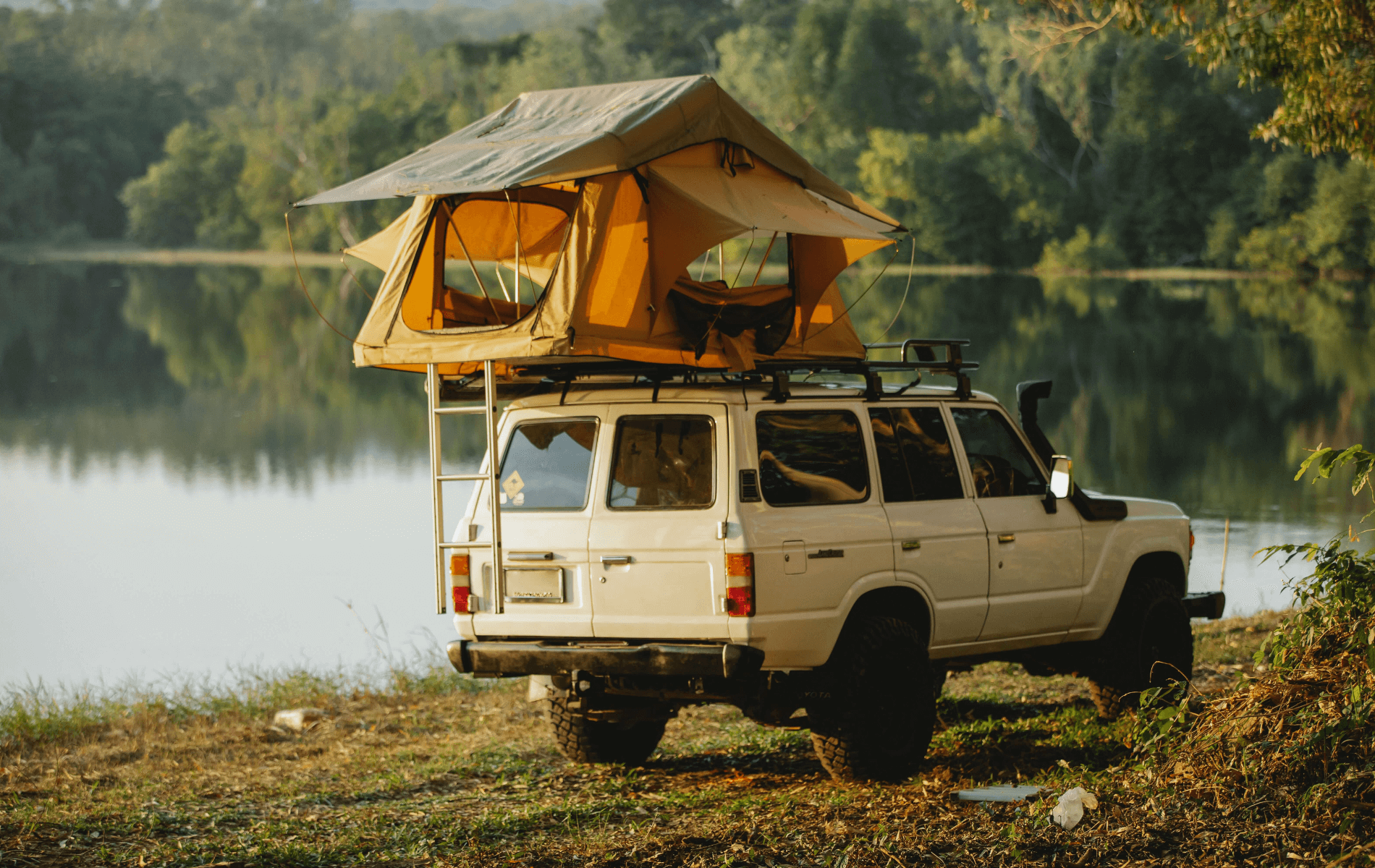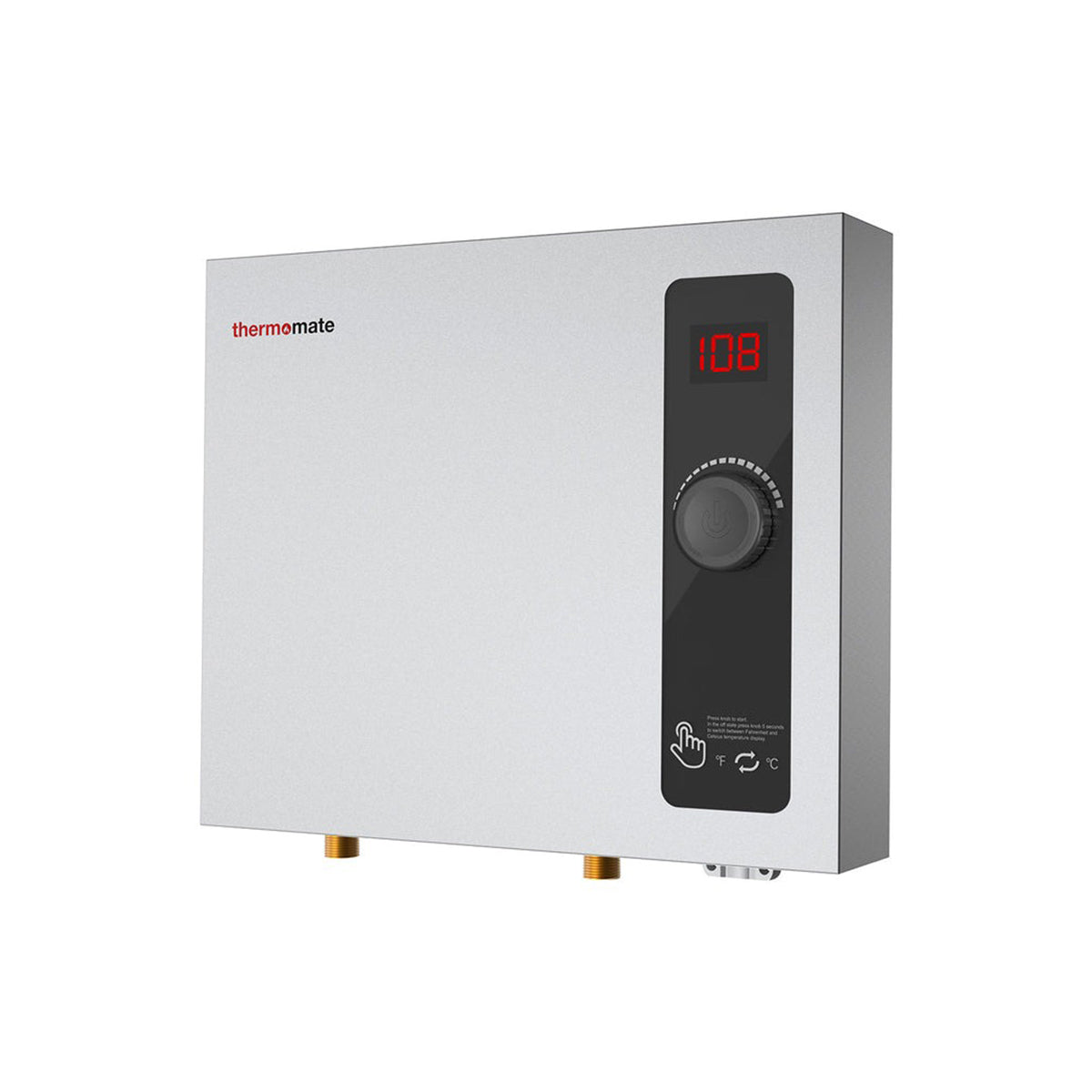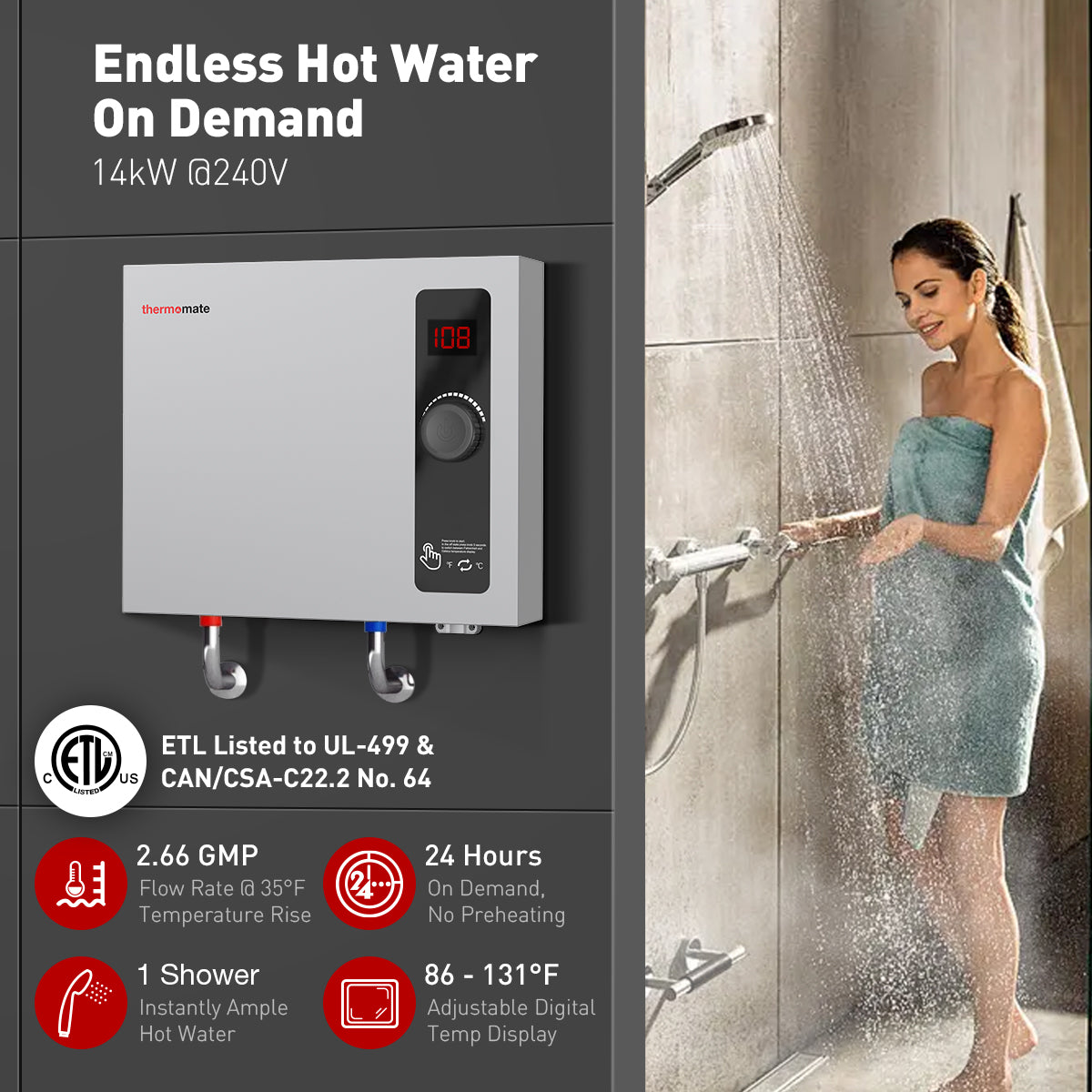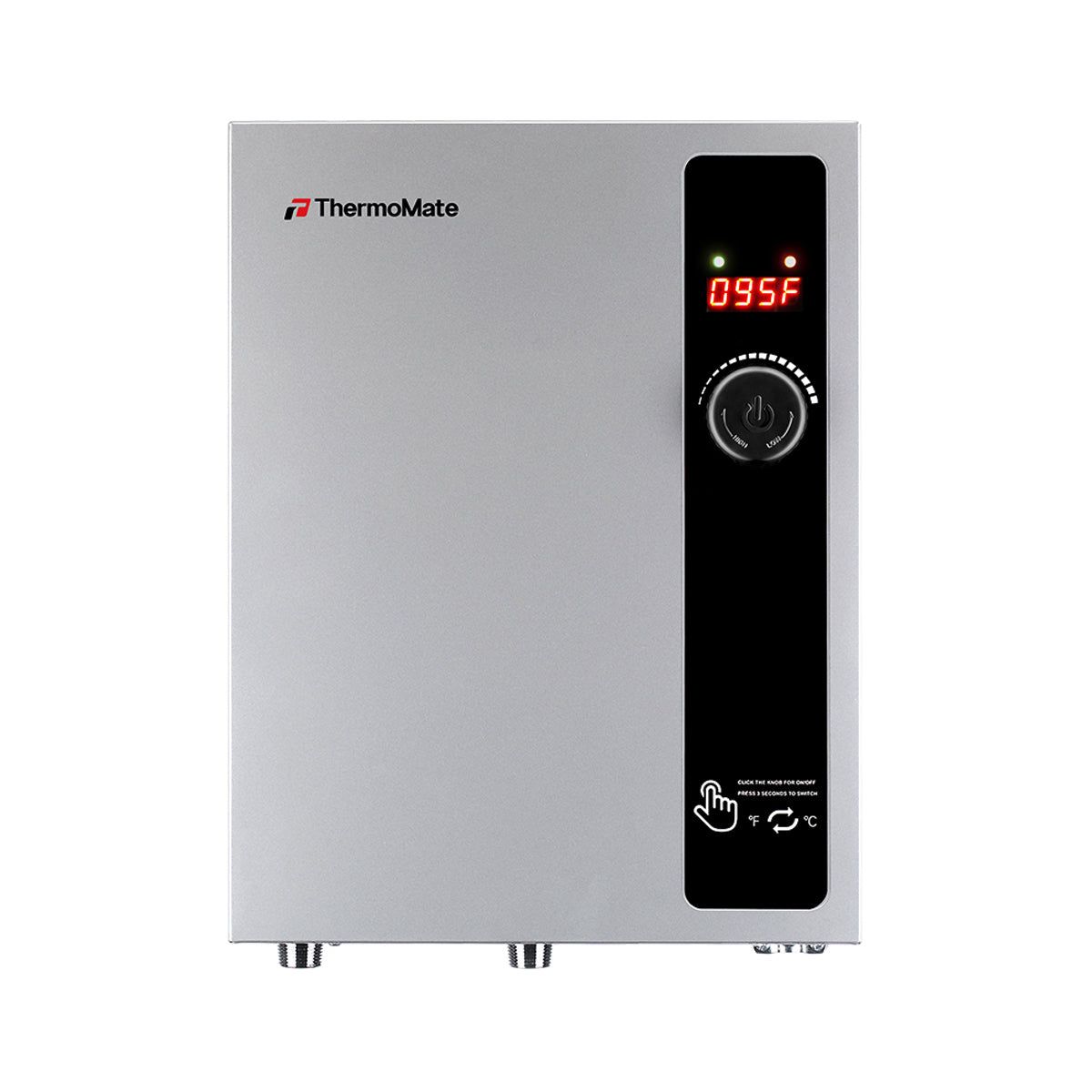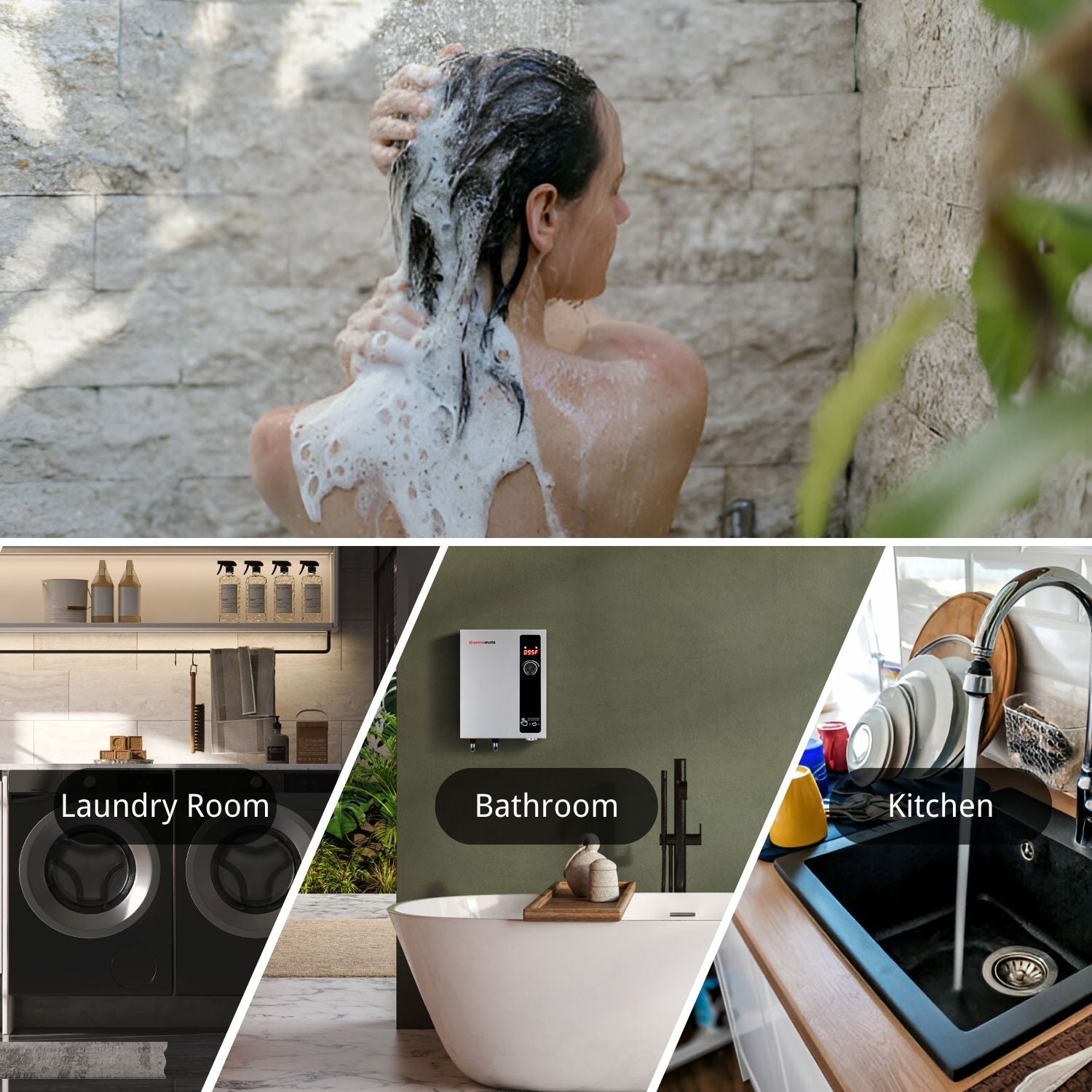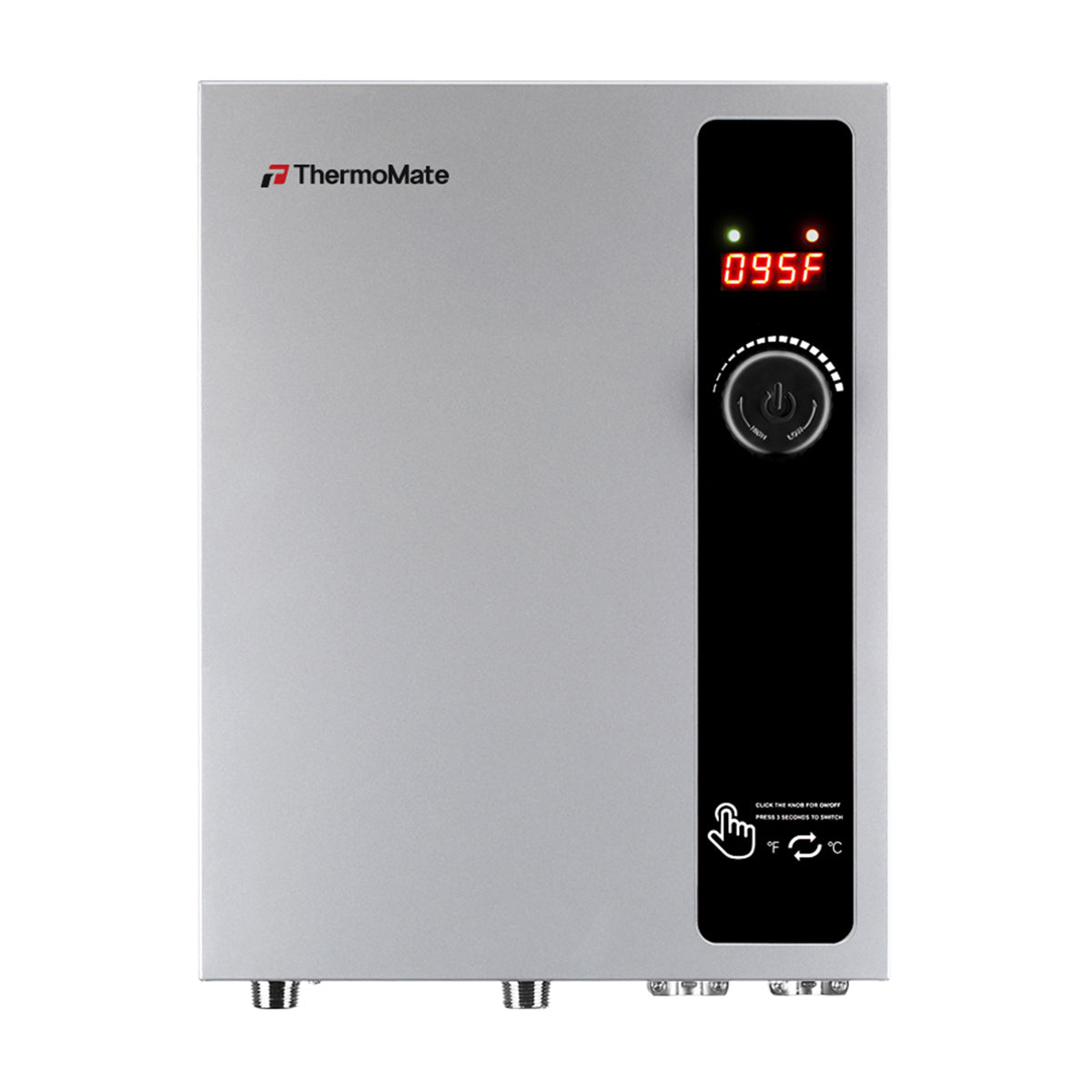While we often take a hot shower or bath for granted, it’s important to note that up to 20% of a household’s annual energy expenditures come from heating hot water. That makes it the second largest utility expense in the home, according to the U.S. Department of Energy, averaging around $400 to $600 per year.If you are looking to install a new hot water heater—or replace an existing one—the type, size and efficiency of the unit you choose will have a big impact on its performance and long-term savings.
📝📝Table of Contents
- What is a tank water heater
- What is a tankless water heater
- Fuel Type
- Outdoor Gas Tankless Water Heaters
- Electric Tankless Water Heaters
- How to Select the Right Size Tankless Water Heater
- How to Calculate Flow Rate
Storage tank water heaters are commonly found in most homes. Their components are an insulated tank, to heat and store the water until it’s needed. A pipe emerges from the top to deliver hot water to its destination, kitchen, bathroom, or other sinks.
Traditional tank-style water heaters store hot water in a tank which requires energy to keep the water hot until it's needed.
🛒SHOP ELECTRIC TANK WATER HEATER
What is a tankless water heater
Tankless water heaters have become increasingly popular largely due to their energy efficiency and compact design. And since they heat and deliver hot water only when it's needed, you may hear them referred to as on-demand water heaters.
The ability to deliver hot water on-demand means, that unlike a traditional tank-style water heater, tankless systems aren't limited by the size of their tank.
Where a tankless water heater operates only when there's a demand for hot water.
Fuel Type
The fuel source is another important consideration when selecting a water heater. While there are hot water heaters compatible for gas, oil, electric, propane, and even solar, each has its own advantages and disadvantages.
Natural gas units produce hot water quickly and are available in various sizes and models, but they require venting through a chimney or wall.
Liquid propane water heaters have similar venting requirements to natural gas, but they require a storage tank and regular fuel deliveries.
Electric water heaters are easy to install and do not require special venting, but they require more energy in comparison to other energy sources.

Outdoor Gas Tankless Water Heaters
Outdoor tankless systems are designed to be installed on the exterior of a house. They utilize the free air flow of the outdoors to vent their combustion exhausts.
Because they do not require additional venting, an outdoor tankless system may be the ideal choice if you're transitioning from a tank-style water heater, since installation is frequently easier and less expensive in homes that are already built.
Electric Tankless Water Heaters
With a more simplistic design, electric tankless systems are easier to troubleshoot, diagnose and repair. This also means they typically have a longer service life.
And, when it comes to installation, an electric tankless water heater is easier and less expensive to install. This is largely because there isn't a need for the venting of exhaust.
In fact, since venting isn't necessary, and electric tankless systems are significantly smaller (about a third the size of gas heaters), they can be installed in locations where a tank-style or gas tankless heater simply wouldn't be feasible.
In addition, since there isn't exhaust/greenhouse gases produced, electric systems are an excellent environmentally-friendly option.
It should also be noted, that as a general rule, electricity prices are far more stable than gas prices, and it's generally agreed that the price of electricity will likely rise at a much slower pace.
🛒SHOP ELECTRIC TANKLESS WATER HEATER
How to Select the Right Size Tankless Water Heater
Tank-style water heaters hold a reserve of hot water in a storage tank, but a tankless system doesn't have this buffer to fall back on to cover shortages during peak periods. If you require more hot water than your tankless heater is capable of heating, the water will be lukewarm.
Leaving you with a less than pleasant shower!
When sizing a tank-style water heater, we think in terms of capacity (50-gallon tank), but with a tankless system, we think in terms of flow rate (5 GPM - gallons per minute).
In order to select the right size tankless water heater, you'll need to determine the following:
1.Temperature rise for your geographical area.
2.Household's peak demand flow rate.

- The first thing you need to do is determine when the demand for hot water is the greatest. This is called your peak hour flow rate.
- Next consider what hot water outlets are being used during this time. How many showers are running at the same time? Are you running a dishwasher?
- For each, you'll need to determine the required GPM (gallons per minute) needed.
- Then, simply add the GPM of each device and the total will be your household's peak hour flow rate.
As an example, if you'll be running 1 shower with a flow rate of 2.5 GPM, and 1 bathroom faucet with a flow rate of 1.5 GPM during your peak hot water hour, then your peak flow rate will be 4 GPM (2.5 + 1.5 = 4).
Keep in mind, not all faucet heads have the same flow rate. It's always best to check with the manufacturer to determine the exact flow rate for your specific faucet.

📝Whether tank or tankless, water heaters can dramatically impact your home's comfort and costs. If you are looking to replace an existing unit, the type, size and efficiency of the one you choose will be important. It is our purchase purpose to choose the one that suits you.

